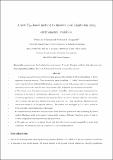A new FST method to uncover local adaptation using environmental variables
Abstract
1. Genome-scan methods are used for screening genome-wide patterns of DNA polymorphism to detect signatures of positive selection. There are two main types of methods: (i) "outlier'' detection methods based on FST that detect loci with high differentiation compared to the rest of the genome, and (ii) environmental association methods that test the association between allele frequencies and environmental variables. 2. We present a new FST-based genome-scan method, BayeScEnv, which incorporates environmental information in the form of "environmental differentiation''. It is based on the F-model, but, as opposed to existing approaches, it considers two locus-specific effects; one due to divergent selection, and another due to various other processes different from local adaptation (e.g. range expansions, differences in mutation rates across loci or background selection). The method was developped in C++ and is avaible at http://github.com/devillemereuil/bayescenv. 3. A simulation study shows that our method has a much lower false positive rate than an existing FST-based method, BayeScan, under a wide range of demographic scenarios. Although it has lower power, it leads to a better compromise between power and false positive rate. 4. We apply our method to a human dataset and show that it can be used successfully to study local adaptation. We discuss its scope and compare it to other existing methods.
Citation
de Villemereuil , P & Gaggiotti , O E 2015 , ' A new F ST method to uncover local adaptation using environmental variables ' , Methods in Ecology and Evolution , vol. 6 , no. 11 , pp. 1248-1258 . https://doi.org/10.1111/2041-210X.12418
Publication
Methods in Ecology and Evolution
Status
Peer reviewed
ISSN
2041-210XType
Journal article
Description
PdV was supported by a doctoral studentship from the French Ministère de la Recherche et de l'Enseignement Supérieur. OEG was supported by the Marine Alliance for Science and Technology for Scotland (MASTS).Collections
Items in the St Andrews Research Repository are protected by copyright, with all rights reserved, unless otherwise indicated.

